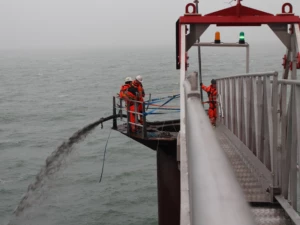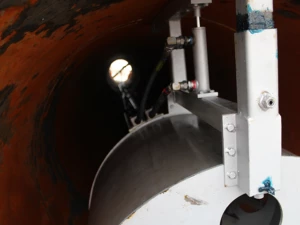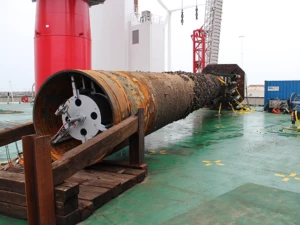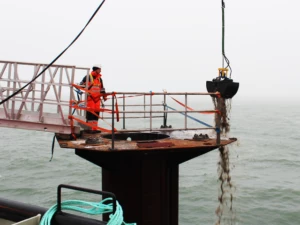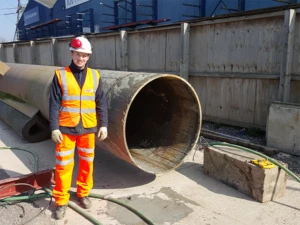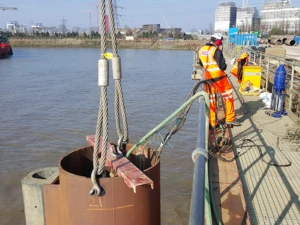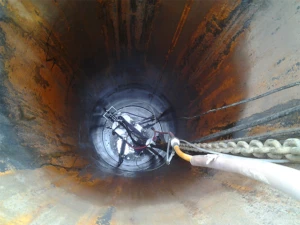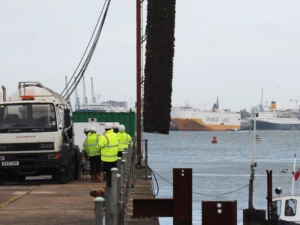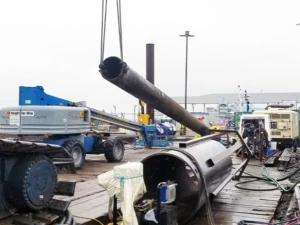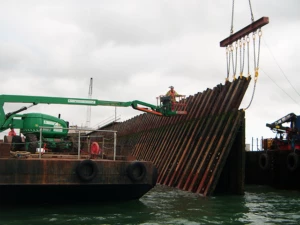

Underwater Pile Cutting
RGL has pioneered advanced techniques for cutting hollow steel piles below ground or seabed level using abrasive water jet technology.
Our remotely controlled internal pile-cutting systems have been successfully deployed in diverse environments, including rivers, estuaries, offshore, and land-based projects. We’ve safely cut monopiles and met masts ranging from 300mm to over 4 meters in diameter, with many sizes in between.

Monopile cut internally by abrasive water jet
Our systems operate from pontoons or jack-up barges, cutting piles from the inside out with precision. RGL’s in-house design and fabrication teams create bespoke rigs tailored to your project’s unique requirements, accommodating a wide range of sizes and conditions.
View our schematic below for an overview of RGL’s pile-cutting process, from dredging to cutting.

Typical applications
- Cutting circular steel piles internally below bed level
- Removing windfarm monopiles and met masts below seabed level
- Cutting circular piles externally when seabed-level cuts aren’t required
- Cutting sheet piles (e.g., Larsen piles) on jetties, marine terminals, and cofferdams
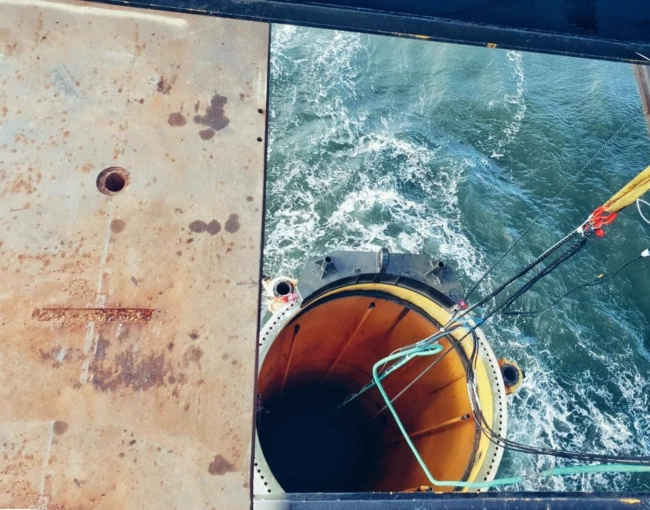
Safety and environmental advantages
- All activities are conducted from a solid platform on land, barge, or other suitable marine base, meaning that no men are required to enter the water
- All RGL’s equipment is remotely controlled and can be operated from the solid platform
- The garnet cutting medium used in the cutting operation is an inert mineral that has no negative impact on the environment
Projects successfully completed
- North Sea: Meteorological mast - Removal of steel monopile
- Ellesmere Port: Wind turbine - Removal of steel monopile
- Tilbury Docks: Marine jetty - Removal of hollow tubular steel piles
- Bombay Sapphire: Ornamental glass house - Cutting of Larsen sheet piles (300mm below the riverbed)
- River Tyne: Tunnel - Removal of large diameter temporary circular steel piles
- Southampton Docks: Marine jetty - Removal of circular steel piles
- Canary Wharf: West India Dock - Removal of temporary piles supporting a building
- Blythe Wind Farm: Removal of two 3.2m diameter piles, cutting below seabed level
RGL are the UK’s leading interface between water jetting technology and the job to be done.
Call us on 02380 817 160 or request a call back.

